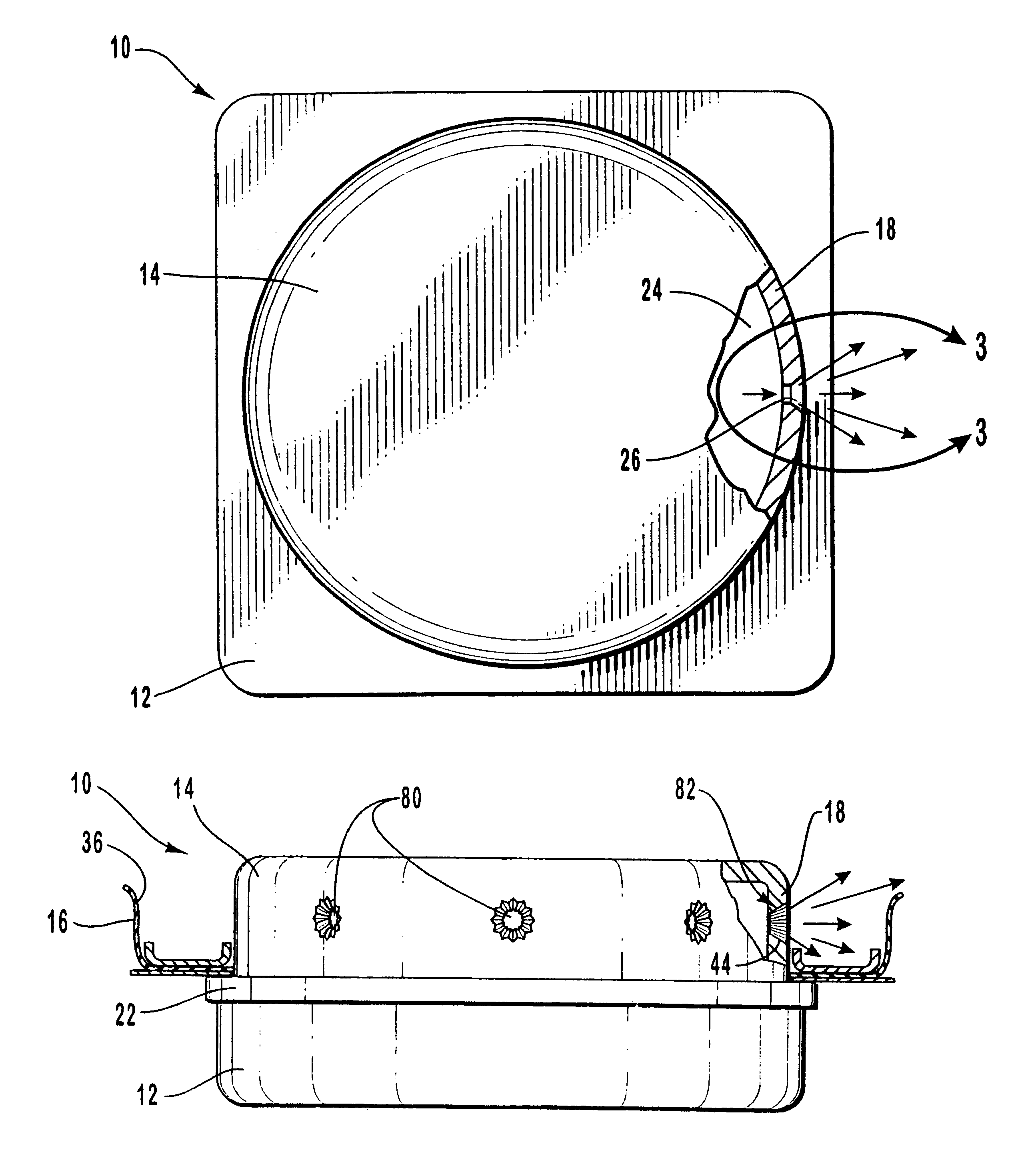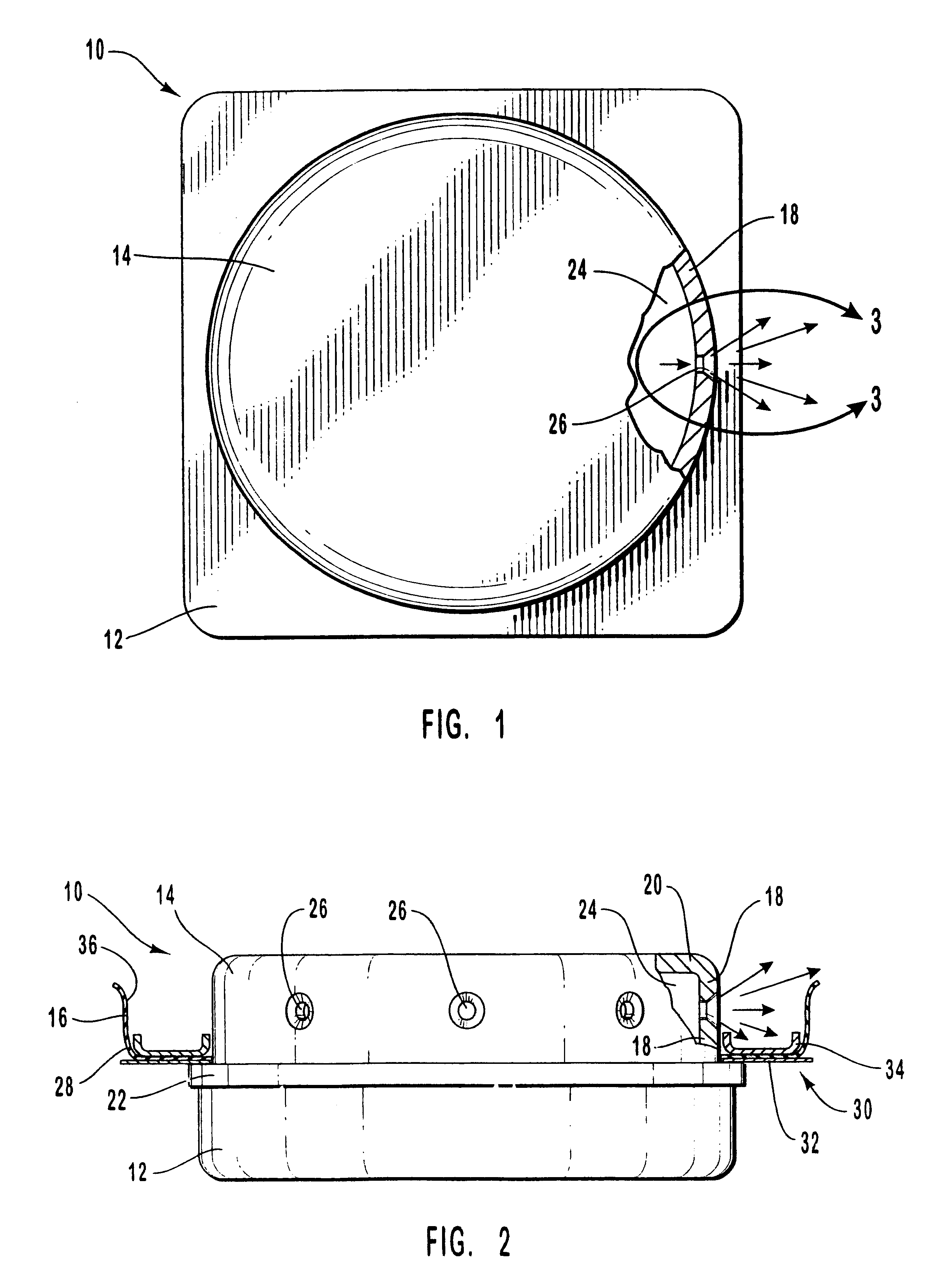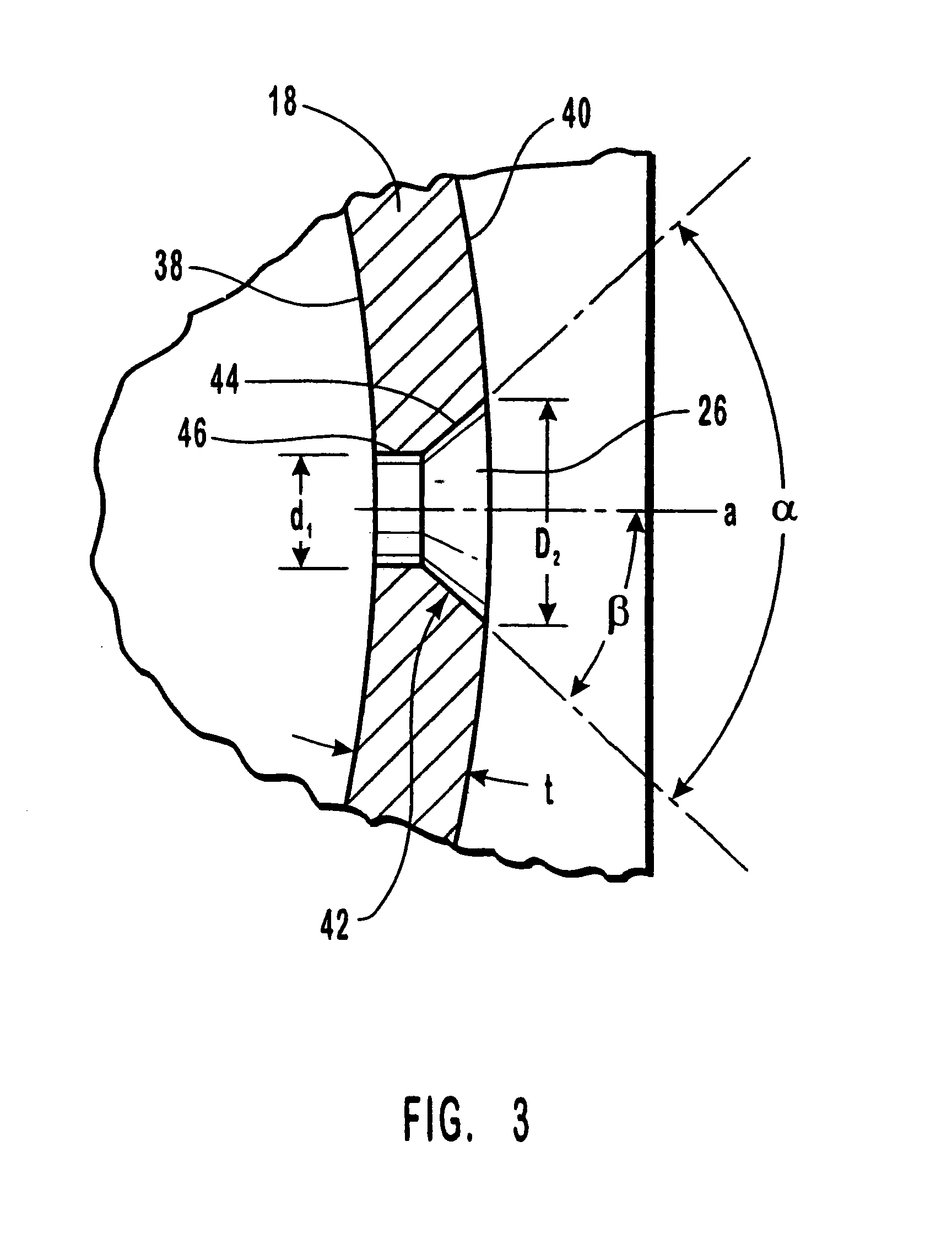Air bag inflation exit gas dispersion features
a technology of airbags and gas dispersion, which is applied in the direction of pedestrian/occupant safety arrangements, vehicular safety arrangements, vehicle components, etc., can solve the problems of concentrated streams of gas scorching burning through the airbag cushion, and damage to the inside surface of the airbag cushion. , to achieve the effect of not increasing the thickness of the airbag cushion
- Summary
- Abstract
- Description
- Claims
- Application Information
AI Technical Summary
Benefits of technology
Problems solved by technology
Method used
Image
Examples
example 2
Discussion and Conclusion
A ratio of diameter d.sub.1 to wall thickness t of 0.96 and 1.2 was used in this test. Adding the countersink to the apertures helped to disperse the gas stream from each aperture. Diffusing the gas reduced the concentration of the stream of gas and helped to reduce the temperature and the pressure of the gas impacting upon the inside surface of the air bag cushion. Approximately a 50% reduction in the number of burned through location in the throat or gas inlet opening of the air bag cushion proximate to the retaining ring were observed.
example 3
TABLE 4
Discussion and Conclusion
Table 3 depicts the equipment and specifications used in Experiment 3. Table 4 depicts the standards used for a baseline comparison. A ratio of diameter d.sub.1 to wall thickness t of 1.67, 2.14, and 2.27 were used in this test. Adding the countersink to the apertures helped to disperse the gas stream from each aperture. Diffusing the gas reduced the concentration of the stream and helped to reduce the temperature and the pressure of the gas impacting upon the inside surface of the air bag cushion. In this experiment, the width of the flat portion proximate to the diameter d.sub.1 was reduced in comparison the that in Experiment 1 and 2. In addition, in this experiment there were three sizes of apertures instead of only two sizes.
A baseline run resulted in two (2) locations of burn through of the air bag cushion. In contrast, the configuration used in the experimental run of Experiment 3 resulted in no cushion burn through. The baseline run indicated ...
PUM
 Login to View More
Login to View More Abstract
Description
Claims
Application Information
 Login to View More
Login to View More - R&D
- Intellectual Property
- Life Sciences
- Materials
- Tech Scout
- Unparalleled Data Quality
- Higher Quality Content
- 60% Fewer Hallucinations
Browse by: Latest US Patents, China's latest patents, Technical Efficacy Thesaurus, Application Domain, Technology Topic, Popular Technical Reports.
© 2025 PatSnap. All rights reserved.Legal|Privacy policy|Modern Slavery Act Transparency Statement|Sitemap|About US| Contact US: help@patsnap.com



